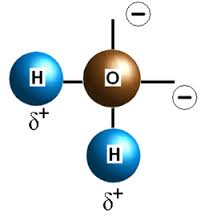
-

Water = h20 Water comes in three states, right? Not exactly. There are at least 22 different phases of water (19 are ice, two are liquid, and one is gas). One of the most useful exotic phases of water is the “supercritical” state achieved at very high temperature and pressure. Under those conditions, water can be dense like a liquid but flow like a gas. In nature, supercritical water likely exists at the lowest reaches of geothermal reservoirs (See Triple-Point).
- If all of Earth’s freshwater were balled up, it would form a sphere 170 miles in diameter. Add to it all the salt water and the orb would be 860 miles in diameter (the moon is about 2,200 miles in diameter). And our home planet isn’t the wateriest sphere in the solar system. That title belongs to Jupiter’s moon Europa, which has two to three times as much water in and below its icy crust.
- Ice is weird, which is essential to freshwater life forms: Like other liquids, water contracts when it cools. But when it turns to ice it expands, by 9 percent of its volume. This means that ice floats on chilly lakes, which in turn means that aquatic creatures can swim safely underneath and survive winter.
Source: Weird Science






























